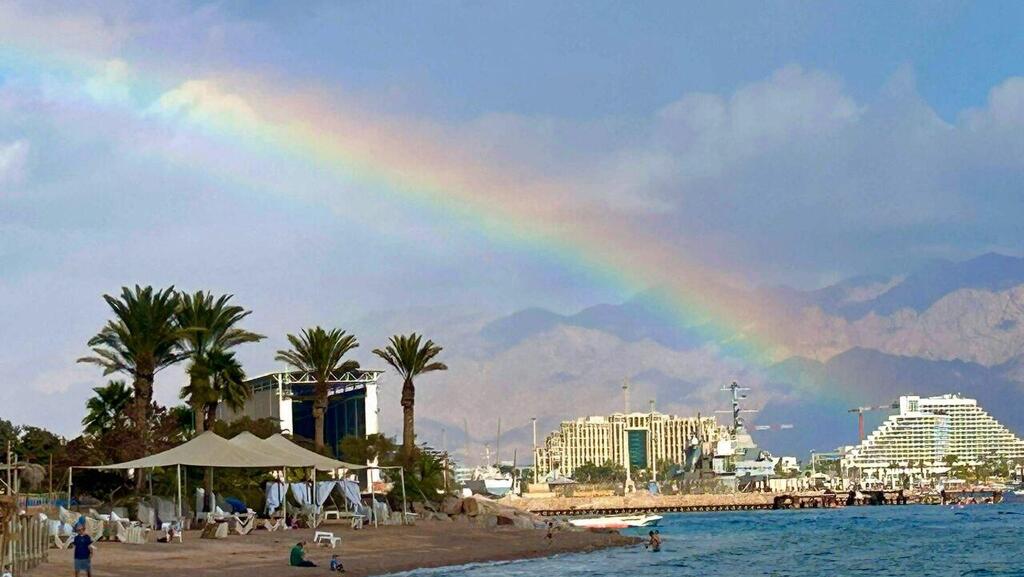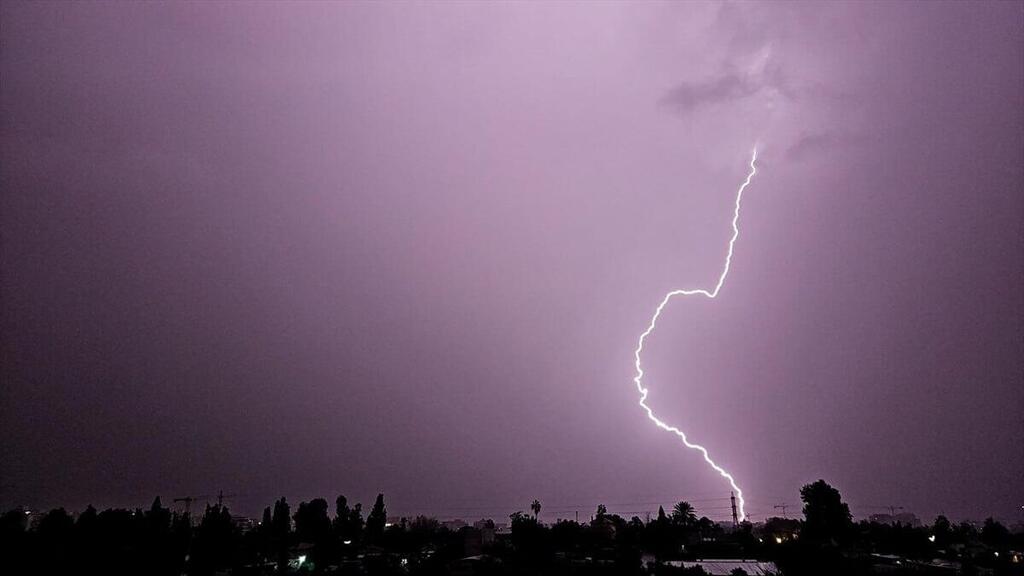Getting your Trinity Audio player ready...
This weekend will mark the end of January and the beginning of February, the two main months in the Israeli winter and when most of the rain falls. But winter has apparently taken a "time-out" and with temperatures across the country above 20°C (68°F) there is no serious rain is in sight at least for the next seven days. Experts say this is a result of the climate crisis, and Israel is in a region that is warming at a faster rate than most other regions of the world.
The Israel Meteorological Service reports that Israel is on the verge of breaking historic drought records in January, especially in the north of the country. At many Meteorological Service measuring stations in the Golan Heights and the Upper Galilee, zero precipitation fell during the current month. In Nimrod Fortress on the slopes of Mount Hermon, in the Banias and Tel Dan nature reserves in the Hula Valley, in Yehudiya and Mashushim in the Golan Heights, and on Mount Canaan in the Upper Galilee, only between 0 and 2 mm fell by Sunday. The director of the Meteorological Service, Dr. Amir Givati, told Ynet this Tuesday morning that "a situation in which no rain fell at all in January in the rainy areas of the country, such as the Golan Heights and the Galilee, has never been recorded before."
In Jerusalem and Beersheba, only 35% of the average amount of rain has fallen so far, in the Western Negev about 30%, in Tel Aviv 50%, and in the Modi'in area 36%.
The situation is better in the north of the country, but even there the amounts of rain that fell did not reach the average. In Haifa, 79% of the precipitation expected by this time of the season has fallen, in Tiberias 63%, in the Galilee 50%, in the northern Golan Heights also about 50%, and in Nahariya about 70%.
However, there are a few areas where a higher amount of rain fell than average so far for the season, such as Zichron Yaakov, but these are areas where heavy rain fell in a very short period of time and caused damage and flooding.
Meteorological Service data actually indicate a severe drought that is intensifying across the country. Even in long-term forecasts reaching the beginning of February, there is still no real change in the synoptic pattern that led to the current drought.
In the coming days
The Meteorological Service reported that Tuesday there would be a slight increase in temperatures, mainly in the coastal plain and the lowlands. Overnight, easterly winds will strengthen in the northern and central mountains. A slight increase in temperatures is also expected Wednesday. And the warming trend will continue on Thursday, after which there will be another slight increase in temperatures mainly in the mountains and inland, and temperatures will be higher than usual for the season. On Friday, light local rain is possible in the north and center of the country. No rain is expected on Saturday, Sunday and Monday according to the current forecast.
The BBC website, which provides a forecast for the next 14 days, says that light rain is possible on Wednesday of next week and the Friday after that. The website, which also predicts light rain on February 9 and 10, does not see any serious rain. However, this is a long-term forecast, which can change.
The reason for the lack of rain
Professor Adi Wolfson, head of the master's degree track in green engineering at the Sami Shimon Academic College of Engineering, explains why there is so little rainfall.
"Despite the height of winter, January was completely dry in all parts of the country. We are now not only in a state of agricultural drought, but also in a climatic drought. The climate crisis is changing the water cycle in nature. When the sea is warmer and the atmosphere is warmer, more water evaporates, but also more water accumulates in the air. This situation causes a change in the amount of rainfall and a more intense distribution in time and space, so that we receive an amount of rain in a short time and in a narrow place, rather than in a scattered manner," according to Wolfson.
"At the same time, the soil is drying out and is less able to absorb water, so the underground water reservoirs are emptying and there are more floods, and unlike us who rely on desalination, nature has no alternative water source and is being critically damaged," he added.
Get the Ynetnews app on your smartphone: Google Play: https://bit.ly/4eJ37pE | Apple App Store: https://bit.ly/3ZL7iNv
In an interview with Ynet last week, the director of the Israel Meteorological Service, Dr. Amir Givati, referred to the hot and humid January and the fact that the amount of rainfall in February could also be low.
"The trend is that it will be much warmer here, that we will feel less winter," said Givati. "Winter is getting shorter in that we may be getting the amounts of rain that we are supposed to get on average, but it all falls in a day or two. In November, we got 200 mm in three hours, which is very, very rare. This is really the trend. It's bad for agriculture, it's bad for energy, it's bad for all of us, that instead of rain falling regularly, it becomes such short and extreme episodes. When it does fall, it falls all at once, and then there are three weeks of sunshine. It's very worrying."




